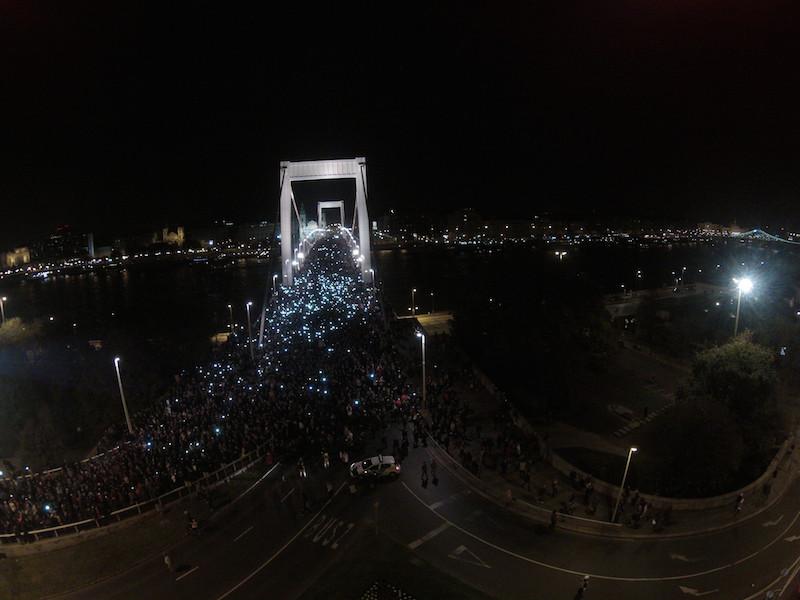The famous social theorist Charles Tilly once said that social movements are legitimate and effective if they can demonstrate that they are WUNC: worthy, united, numerous, and committed. Movements are taken seriously, and experience success, when they are large, united, committed, and working on a worthwhile cause. Thousands of books make more sophisticated versions of that same argument, but when you really boil it down, movements matter for these four reasons.
In fact, it might get boiled down even further: Unity is shown through numbers, numbers are sometimes a shorthand for worth (shouldn’t be, but there it is), and large numbers of people out on the street are certainly committed—after all, it takes some effort to get out there and hold up a poster, especially if it’s raining, or cold, or the police are watching, and so forth. Large protests are WUNC almost by default!
That’s why having an accurate estimate of protest event size is so important. Movements know this. So do the media. So does the state. So do opponents.
I live in Hungary, where supporters of the increasingly autocratic prime minister, Viktor Orban, claimed a few years ago that 1 million people turned out for a pro-regime event. Not so fast! cried civil society groups. That’s 11 percent of the country’s population. It’s like 31 million Americans turning out to spontaneously support Obama. Don’t think so. But, in the end, it was their word against the state’s. The general public loses interest in such back-and-forth conversations, especially when there’s no clear arbitration.
Wouldn’t it be great to have some neutral arbiter? The United States tried. For a time, the National Park Service provided official estimates for events held at the Mall in Washington, D.C. It provided this service without much fuss until the Million Man March held by Louis Farrakhan turned out to be something more like the “less than half a million man march.” Less alliterative, and definitely less WUNCy. Farrakhan sued, and the Park Service got out of the crowd estimation business. That’s too bad. Without an official estimate, everyone—the general public, the media, and policymakers—is stuck with organizers’ version of things. In authoritarian regimes, everyone’s stuck with the authorities’ version of things.
Recently, Budapest has been rocked by some of the largest protests the city has seen in decades. Orban has systematically silenced the independent media and threatened civil society groups. Thought leaders from my home institution, Central European University, are working overtime to raise awareness about this in the New York Times, Foreign Policy, and here in Slate (well, that last one is me).
What got people out onto the streets in the tens of thousands? A tax on the Internet. Activists were mad, sure, but so were geeks and grandmas and businesspeople. Tens of thousands of them—at least that’s what I’m saying. Reuters, on the other hand, said it was 100,000. The administration immediately responded: 100,000!? That’s not right!
But what is the right number? I’m working with my graduate students here at the School of Public Policy on a drone-based estimation method that will allow us to capture definitive imagery from the air. We fly high enough that you can’t see people’s faces, but low enough that you can see each individual body. The data is great for counting figures, but not scanning faces. Good for math, bad for surveillance.
We’ve done all of this with off-the-shelf and over-the-counter technology, and we’re pilot testing the estimation process with everyday people. This first stage of the project isn’t rocket science—we’re building off classic crowd-count approaches developed in the 1960s. Our hope is that civil society actors can use this practical, no-frills approach to conduct estimates of their own. Putting the raw visual data on the Internet would provide transparency and encourage honesty.
A host of challenges present themselves: How to balance security and privacy with the public’s right to know? Some of our approaches have been commonsense: fly high enough that people cannot hear the device. Unmanned aerial vehicles, even small ones, make a lot of noise, and people naturally look up. Doing so gives us facial data on protest participants, possibly putting these people in danger—if, for instance, the regime got access to the raw data.
As we shift into the project’s second stage, with increased technical sophistication, there are new challenges. We’re beginning to develop approaches that harness new technology to help us better understand moving crowds. These puzzles are important for movements, urban planners, post-disaster relief groups, and the like. Once again, care must be taken that our ethics keep pace with our innovation. Capturing important data while ensuring anonymity takes careful planning and constant troubleshooting. Unfortunately, there’s no law to force that balance.
Did the regime have 1 million people on the streets? Next time we’ll be there with our drone to find out.
